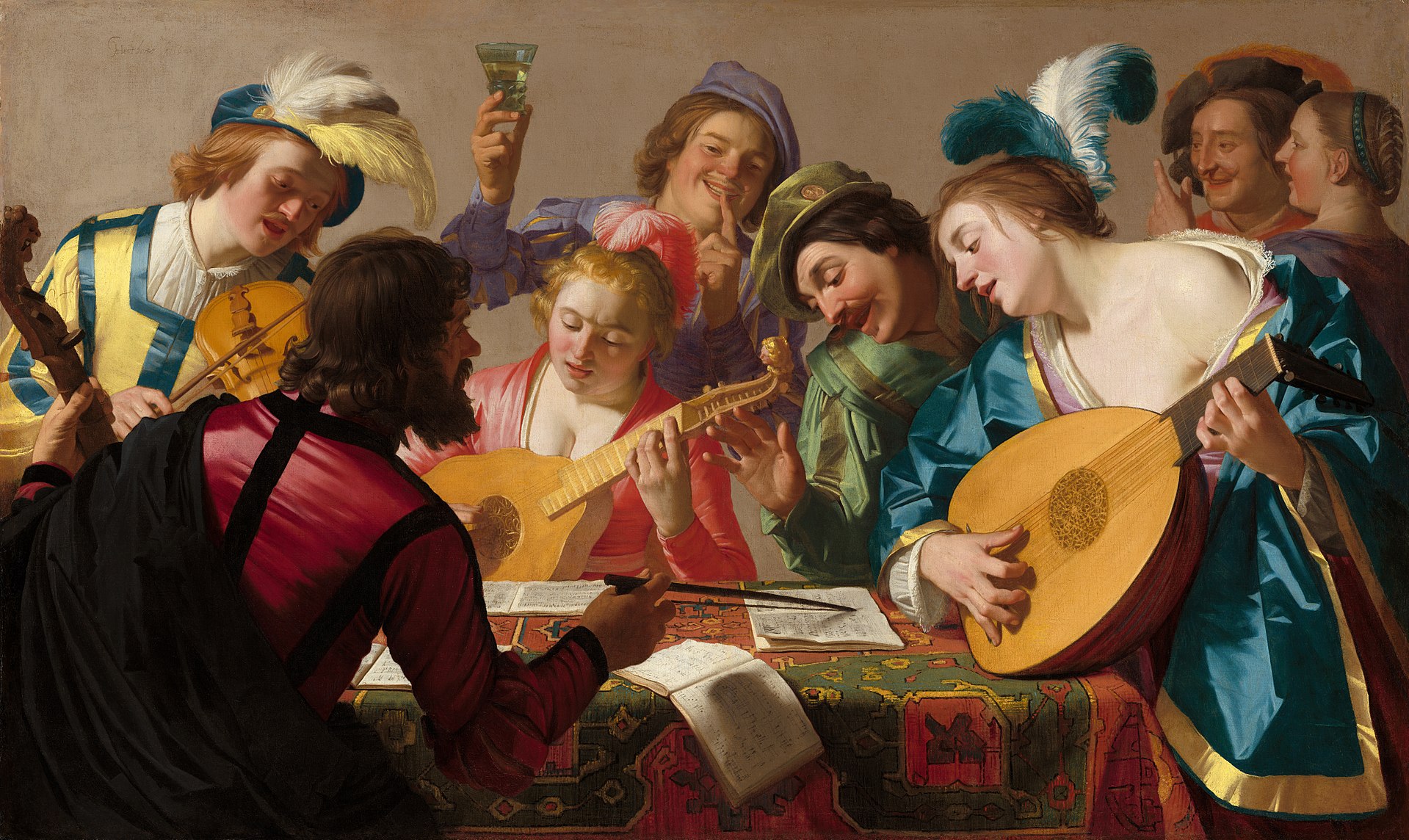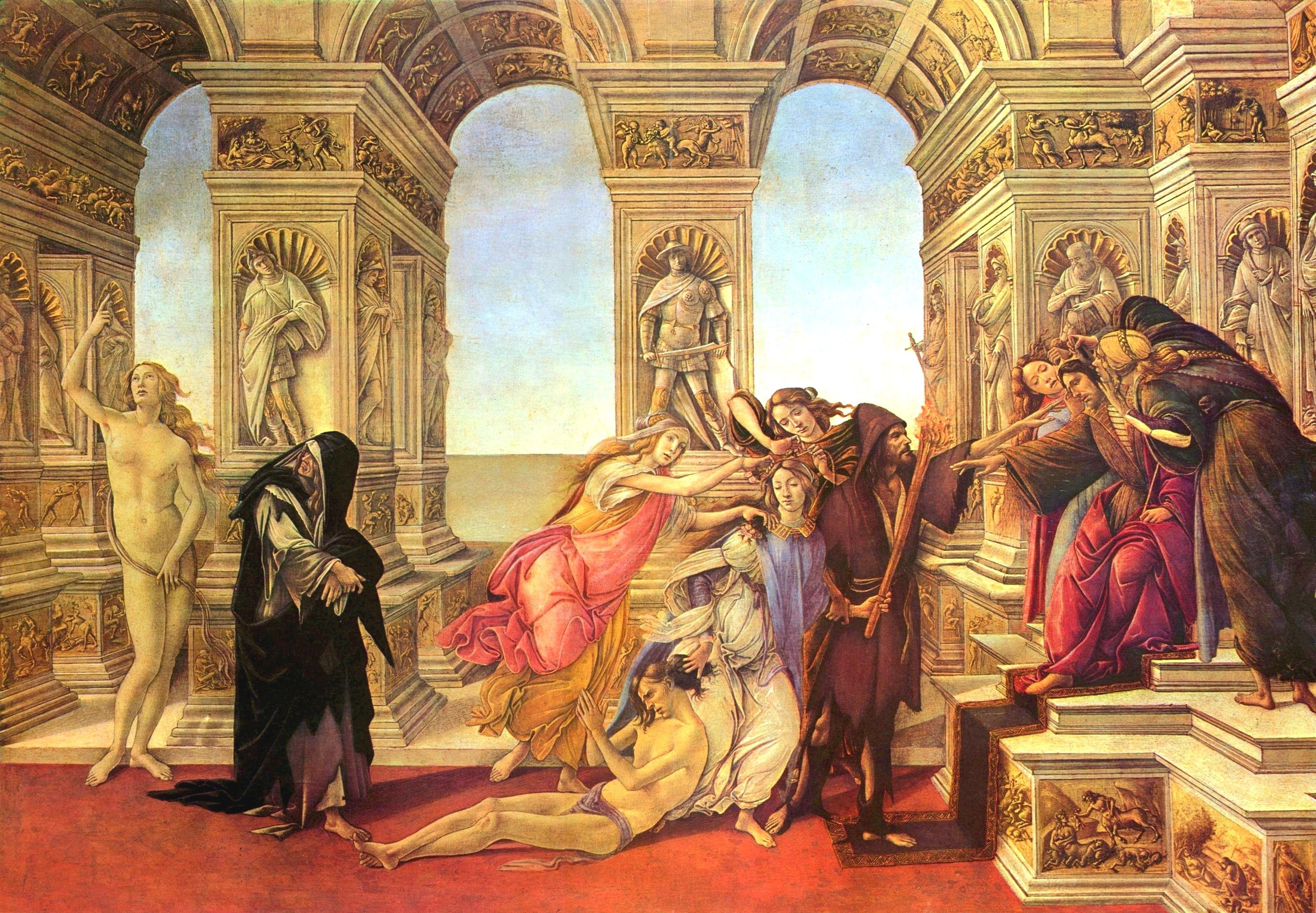
The Concert by Gerrit van Honthorst: This lively painting shows a group of musicians gathered around a table, playing instruments and singing joyfully. The use of light and shadow creates a realistic and festive atmosphere.

The Banquet by Rene Magritte: This vibrant painting shows a grand feast in a classical setting, with people engaged in lively conversation. The detailed architecture and colorful clothing suggest a historical or biblical event.

The Delivery of the Keys by Pietro Perugino: This painting shows Jesus Christ handing the keys of the kingdom of heaven to Saint Peter. Set in a grand architectural backdrop, it symbolizes the authority given to Saint Peter and his successors.

The Rape of the Sabine Women by Nicolas Poussin: This painting captures a dramatic scene of the abduction of the Sabine women by Roman soldiers. The intense emotions and classical architecture convey the gravity of the historical event.